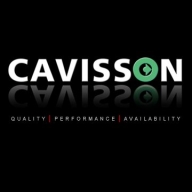

Tricentis Flood and Cavisson NetStorm are competing in the performance testing solutions category. Tricentis Flood stands out due to its scalable and flexible load testing capabilities, making it particularly suitable for dynamic environments, while Cavisson NetStorm is noted for its advanced analytics and monitoring tools.
Features: Tricentis Flood provides scalable cloud-based testing, seamless integration capabilities, and adaptability to dynamic environments. Cavisson NetStorm includes deep analytics, monitoring features, and robust insights into performance metrics.
Ease of Deployment and Customer Service: Tricentis Flood offers a straightforward cloud-based deployment model that simplifies setup and execution, with responsive customer service aiding quick resolutions. Cavisson NetStorm, while robust in deployment, requires more extensive setup and provides comprehensive customer support.
Pricing and ROI: Tricentis Flood features competitive pricing with scalable solutions achieving ROI through minimal setup costs and adaptable usage plans. Cavisson NetStorm has higher initial setup costs but delivers ROI with its detailed performance insights and enhanced features.
| Product | Market Share (%) |
|---|---|
| Tricentis Flood | 1.8% |
| Cavisson NetStorm | 0.7% |
| Other | 97.5% |

| Company Size | Count |
|---|---|
| Midsize Enterprise | 5 |
| Large Enterprise | 15 |
Cavisson NetStorm is a powerful load testing solution that is designed to enable application developers to greatly improve the way their applications function. It employs advanced software that enables it to perform many different tasks. This flexibility gives administrators the ability to test their applications in the way that best meets their needs. Cavisson NetStorm offers users the ability to scale their testing environments. These aspects of the solution are only a couple of the reasons that this platform is the load testing tool of choice of several fortune 100 corporations.
Cavisson NetStorm Benefits
Some of the ways that organizations can benefit by deploying Cavisson NetStorm include:
Cavisson NetStorm Features
Some of the many useful features Cavisson NetStorm has to offer include:
Tricentis Flood is a cloud-based platform for load testing that assists teams in determining how their applications respond to loads that are distributed across the world. This solution makes load testing more accessible to developers and testers by lowering the complexity typically connected with it. By adding load testing into their CI/CD pipelines, teams can start testing the performance of their application components as they develop and continuously track the effects on the system's overall performance.
Tricentis Flood enables DevOps load testing. In addition, it enables DevTest teams to get quick and continuous performance feedback. Because Tricentis Flood and Tosca are integrated, you can use the same scriptless tests you use for functional testing to perform load testing. In addition to supporting conventional protocol-level load-testing techniques, Tricentis Flood also enables testers to do load tests at the browser level without becoming bogged down in technical specifics.
As new features are being developed, teams can begin load testing them. Without having to deal with the headaches of requesting, setting, or managing performance resources on premises or in the cloud, a developer or tester can rapidly produce millions of globally dispersed requests per second from their local PC.
Tricentis Flood distributes test plans over widely accessible cloud servers using open-source tools like JMeter, Gatling, and Selenium. Additionally, it enables you to instantly "flood" any HTTP endpoint.
Tricentis Flood Features
Tricentis Flood has many valuable key features. Some of the most useful ones include:
Tricentis Flood Benefits
There are many benefits to implementing Tricentis Flood. Some of the biggest advantages the solution offers include:
We monitor all Load Testing Tools reviews to prevent fraudulent reviews and keep review quality high. We do not post reviews by company employees or direct competitors. We validate each review for authenticity via cross-reference with LinkedIn, and personal follow-up with the reviewer when necessary.